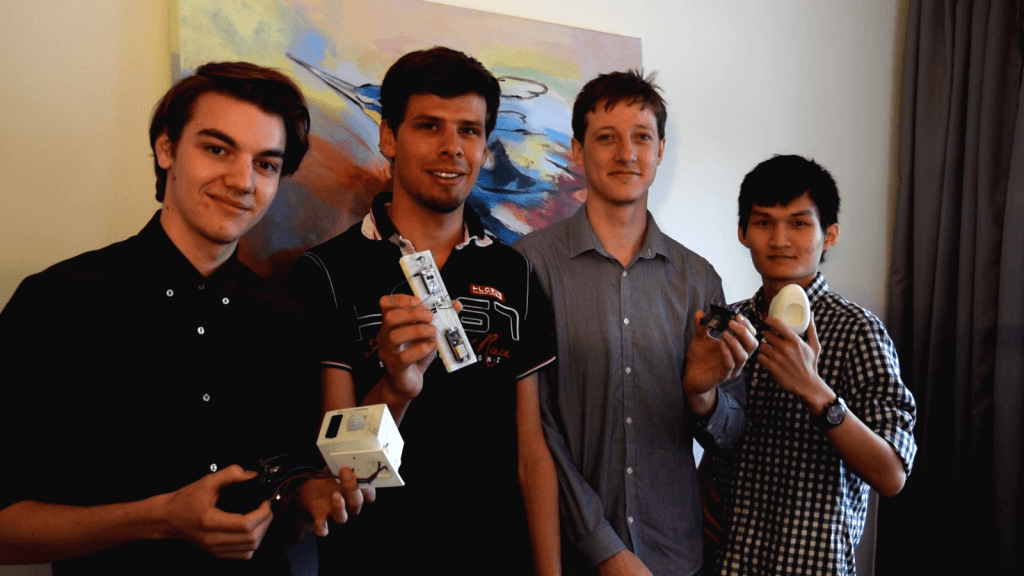
Tim Beckers was lying in bed when something dawned on him: He had to get up again to switch off the lights. As he got out of bed, annoyed by the task that lay ahead of him, he realized: There has to be a more simple way of doing this. That realization planted the seed for a product that will see its Kickstarter campaign launched this September. Aucasi, the smart socket.
At the start of January 2016, Beckers, a student at TU/e, gathered three other students to start work on Aucasi. The team was made up out of four other TU/e-students, all in their twenties: Thijn Kolk, Duco van den Akker and Nguyen Quoc Khanh. It will launch a Kickstartercampaign that will have to provide the funds for further development and production of their product. A succesful campaign for the start-up is targeted at 165.000 euro.
Within the first month of the campaign, a decision to go through or stop will be taken by the team. The final product should be on the market in the summer of 2017. One socket will cost 65 euro. During the Kickstartercampaign the cost to purchase a socket will be lower: 45 euro.

The product should be released on the market in the summer of 2017. One socket would cost 69 euro. During the Kickstartercampaign, the socket price will be lower: 49 euro.
Aucasi’s socket should help turning a regular house into a smart one. In three ways. “We want to save energy, increase user convenience, and help secure the home”, Beckers says. According to Beckers this should work through a series of commands, programmed by the user. A user will plug in the socket, open the Aucasi-app and start issueing commands: If this happens, You (the socket) will respond like this.
“The user is telling the socket: ‘If I walk through this door, that light should be turned on.’ Or: ‘If I don’t come home until 10 PM, a light should be automattically turned on.’ The first scenario is aimed at increasing the users convenience, the latter is aimed at increasing the home’s security. Furthermore, Aucasi can let a user know, someone is in the house when it should be empty, that might be a burglar.”
The user only has to configurate once what they want from the socket and that’s all.”
The third element in which Aucasi wants to seperate itself from the rest of the market lies in the way it can decrease energycosts by eliminating the standby-modus on devices in the home. In Beckers own home. Devices that are on stand-by waste about 16 Watt per year. Which comes down to 32 euro. “We can reduce that to zero.”
The socket should go on where other smart sockets stop. “Use of the socket should be almost completely automated. I don’t want anyone to use an iPad to control the lights, that would just make it some sort of remote control. The user should only have to programme the socket once, that’s it.”
To achieve this, the socket communicates via wifi, sensors and actuators. If a user walks passed a sensor, the light will go on. If the user stops using the Wifi, the light will go off, if this is programmed that way. “This could lead up to a situation where placing a phone on a nightstand will lead to the light being shut off in the bedroom.”
Aucasi’s technique has made its technique open. “Through an open API, we made sure other developers were able to work on their own extensions for the sockets”, says Beckers.
If the Kickstartercampaign is a succes, Aucasi should produce around 3000 sockets. Tim Beckers will no longer have to get out of bed to switch of the lights.
